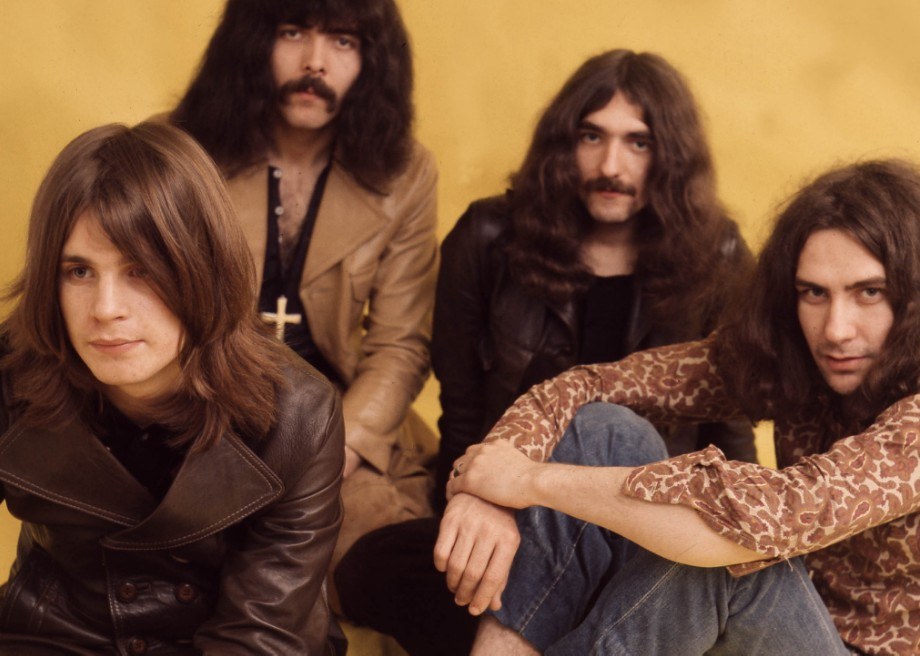
“It is no exaggeration to say that I entered a visual virgin, and two hours later emerged transformed and inspired.” So when the time came to create something for Black Sabbath, less than a year after his museum visit, he had a deep well of ideas.įor the look of the cover, he used Kodak infrared aerochrome film, which was designed for aerial photographs and gave the portrait its pinkish hue. “The biggest influence on my photography was a visit to an exhibition by the Belgian surrealist René Magritte at the Tate Gallery in London in early 1969,” he says. The photographer, still fresh out of the Royal College, had recently discovered surrealism, so he drew on that movement for his designs. Luckily for Macmillan, Wyper had given him the latitude to do whatever moved him for the Black Sabbath sleeve, as long as it was interesting. I wasn’t really into it before, but that album made me a fan for life.” Sorry to talk like an old hippie, but you have to go with a kind of overall feel for the art.” He says that the album expanded his musical horizons: “To be honest with you, it was the first time I really enjoyed that kind of heavy rock, metal. “Obviously, the lyrics go in the back of your mind, but it was more just the overall vibe that struck me. “If I remember rightly, I just listened to the music,” he says. Macmillan began his work on Black Sabbath by playing the album off a quarter-inch master tape. I don’t think it is, but it was probably the first one that went ’round the world the way it did.” “We were very fortunate with Black Sabbath, because that is largely credited by many people as being the first heavy-metal album. “The music had to reflect what was going on, socially, in the country at that time,” Wyper says. The imprint would feature “progressive” music, which by Wyper’s definition included rock, jazz, and folk - “but it all had to be contemporary.” So in addition to undeniably prog-rock records by groups like Colosseum and Manfred Mann Chapter Three, the first six releases included Rod Stewart’s solo debut, An Old Raincoat Won’t Ever Let You Down, and Black Sabbath. Prior to his time in the record business, Wyper had worked in advertising and knew that an album’s cover was important, so “very, very strong imagery,” as he puts it, was part of his business plan for Vertigo. “His work was just fantastic and very different from everybody else’s,” says Wyper.

“He was like, ‘Oh, yeah, these are cool,’ ’cause they were quite surrealistic.” When Wyper moved from CBS to Vertigo, he offered Macmillan a job. “He was being very kind,” Macmillan says with a laugh. Macmillan, who had been taking pictures since he was eight years old, was studying photography at London’s Royal College of Art and had agreed to assist with a black-and-white promo video Wyper was producing for Fleetwood Mac’s “Albatross.” Macmillan met Wyper at a pub, where the record exec asked to see some of the photographer’s pictures. He had met the label’s president, Olav Wyper, when Wyper worked at CBS Records. “I’m very happy just to do this for Sabbath, really,” he says.Īt the time of the Black Sabbath sleeve, Macmillan was still new to his job as the in-house album designer for Vertigo Records, a U.K.

When Rolling Stone reached out to him, asking to discuss Black Sabbath for its anniversary, he changed his mind. In addition to the first four Black Sabbath LPs, he shot classic album covers for David Bowie and Rod Stewart, and videos for Kate Bush and Motörhead, among many other projects.

But “Keef,” whose real name is Keith Macmillan, has never voluntarily agreed to an interview. All fans had to go on was a credit that said, “Album designed and photographed by Keef,” a name that would also appear on the next three Black Sabbath albums. For a half-century, mystery has surrounded the Black Sabbath sleeve.


 0 kommentar(er)
0 kommentar(er)
